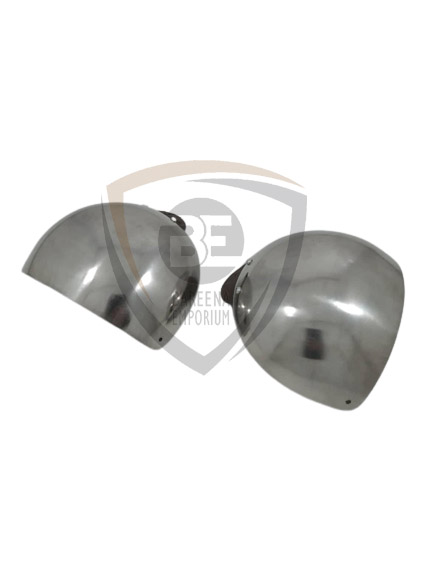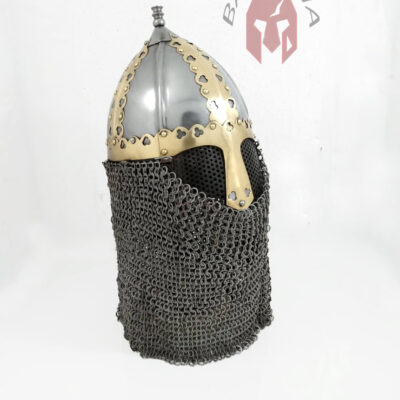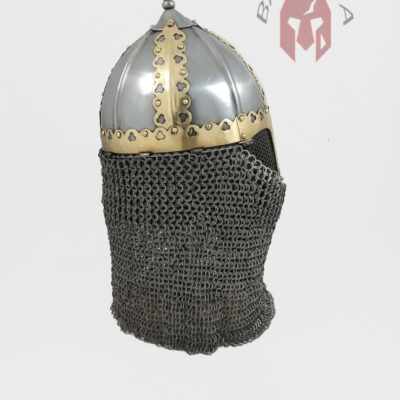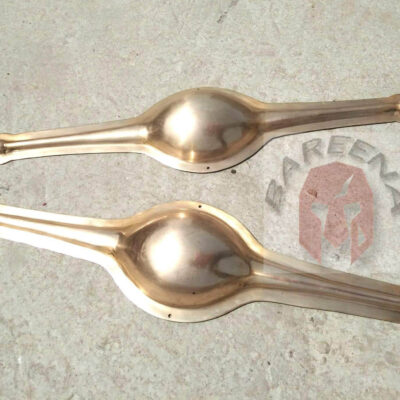Shoulder Cops
Price range: $70.00 through $110.00
Medieval steel shoulder cops, fashioned from the resilient and gleaming 16-gauge steel, embody a fusion of both form and function that encapsulates the spirit of the Middle Ages. These remarkable pieces of armor, born from the forges of skilled blacksmiths and worn by knights and warriors of yore, stand as a testament to the craftsmanship and artistry of the era.
The shape of these shoulder cops is a marvel of ergonomic design. They curve gently to follow the contours of the shoulder, allowing for ease of movement while maintaining a formidable defense against the blows of swords, maces, and arrows. Straps and buckles, expertly crafted from leather and riveted securely to the steel, ensure a snug and comfortable fit, allowing knights to wear them for hours on end without discomfort.
ALL PRICES ARE IN US DOLLARS
Description
Medieval steel shoulder cops, also known as pauldrons, were a crucial component of a knight’s armor during the medieval period. These shoulder defenses were designed to protect the shoulders and upper arms of a knight, providing both mobility and protection in battle. Here’s a brief history of medieval steel shoulder cops made from 16-gauge thick steel:
- Early Development: The use of metal armor in Europe dates back to antiquity, but the development of articulated plate armor, which included components like pauldrons, gained prominence during the late medieval period, particularly in the 14th century. Prior to this, armor was often made of chainmail or various types of plate armor, but it lacked the articulation and protection that later plate armor provided.
- Transition to Plate Armor: As warfare evolved, knights needed better protection on the battlefield. Plate armor offered superior protection compared to earlier types of armor. Plate armor consisted of individual steel plates that were strategically jointed to allow for flexibility while providing maximum protection. Pauldrons were an integral part of this transition, as they protected the shoulders and upper arms.
- Articulation and Design: Medieval armorers and blacksmiths continually refined the design of pauldrons to improve mobility and comfort for the wearer. By the late 14th and early 15th centuries, pauldrons became more sophisticated, featuring multiple articulated plates that allowed for a greater range of motion. The use of 16-gauge steel for pauldrons ensured a balance between protection and maneuverability.
- Variations: The design of pauldrons could vary depending on the region and the time period. Some were more rounded, while others had a more angular appearance. Italian and German armorers, for instance, were known for their distinctive styles and innovations in armor design.
Additional information
| Metal | Mild Steel, Stainless Steel |
|---|---|
| Size | Medium, Regular, X- Large |





Reviews
There are no reviews yet